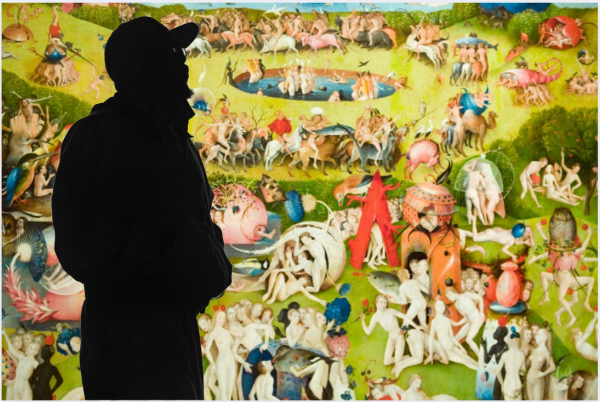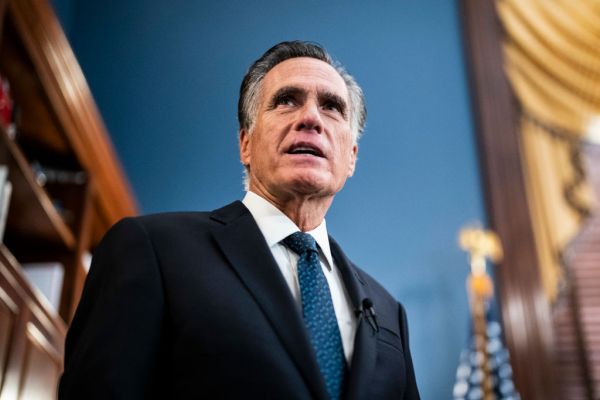Happy Wednesday! Joey Chestnut might just be the greatest American athlete of all time.
Quick Hits: Today’s Top Stories
- U.S. District Court Judge Terry Doughty issued a preliminary injunction on Tuesday barring White House staffers and other federal officials and agencies from communicating with social media companies for the purpose of “urging, encouraging, pressuring, or inducing” them to remove or suppress “content containing protected free speech.” The injunction comes in response to a lawsuit filed by the Republican attorneys general of Missouri and Louisiana alleging the Biden administration violated the First Amendment by working with social media platforms to censor what it deemed misinformation surrounding COVID-19 vaccines, the lab-leak theory, Hunter Biden’s laptop, the 2020 election, and other hot-button issues. The Justice Department will likely appeal the ruling.
- Yevgeny Prigozhin, the Wagner Group leader who instigated a mutiny late last month, appears to have released an audio message on Telegram Monday—his first public comments in approximately a week—that seemingly confirmed he is still alive. “I want you to understand that our ‘March of Justice’ was aimed at fighting traitors and mobilizing our society,” he said. “In the near future, I am sure that you will see our next victories at the front.” One of the targets of Prigozhin’s ire—Defense Minister Sergei Shoigu—also spoke out on Monday, claiming the Wagner rebellion failed because “personnel of the Armed Forces showed loyalty to their oath and military duty.”
- Kremlin spokesman Dmitry Peskov hinted yesterday that Russia would be open to a prisoner swap that would free Wall Street Journal reporter Evan Gershkovich—who has been detained since March on dubious espionage charges—in exchange for Vladimir Dunaev, a Russian national charged with cybercrimes in 2021. “There have been certain contacts on the subject, but we don’t want them to be discussed in public,” Peskov told reporters. “They must be carried out and continue in complete silence.” The U.S. ambassador to Russia was allowed to meet with Gershkovich in Moscow on Monday for just the second time since the reporter was arrested.
- The State Department recently issued an updated travel advisory for China, recommending Americans “reconsider” any travel to the country due to its “arbitrary enforcement of local laws” and the “risk of wrongful detentions.”
- Lawyers for Civil Rights—a Boston-based legal nonprofit—filed a complaint against Harvard University with the Department of Education’s Office for Civil Rights on Monday, alleging Harvard’s legacy admissions policy “systematically disadvantage[s] students of color” and is “not justified by any educational necessity.” The complaint comes just days after Harvard’s race-based admissions policies were found to violate the Fourteenth Amendment’s Equal Protection Clause.
- NATO member countries agreed on Tuesday to extend Jens Stoltenberg’s term as secretary general another year—until October 2024—after failing to coalesce around a successor to the former Norwegian prime minister, who’s led the military alliance since 2014. Stoltenberg’s tenure atop the organization had already been extended three times—in 2017, 2019, and 2022.
- The German government announced Monday it will increase its defense budget to the equivalent of $56.4 billion in 2024, a record high. Combined with a special fund set up in the aftermath of Russia’s invasion of Ukraine, Germany’s total military investment is now on pace to hit NATO’s target of 2 percent of its gross domestic product.
- At least five people were killed—and two more injured—when a shooter wearing a bulletproof vest opened fire in southwest Philadelphia on Monday night, seemingly at random. The perpetrator was apprehended by police on the scene and is expected to make a court appearance today.
No Chickens Were Harmed in the Making of This Chicken

Independence Day is many things—a celebration of the American founding, a time to reflect on how the United States is living up to its ideals, a means of bringing communities together across the country—but above all, it’s a day to overeat. “I normally don’t have a burger, brat, and a steak,” comedian Jim Gaffigan once quipped. “But it is [the] Fourth of July.”
Americans consume tens of millions of hot dogs and hamburgers at this time every year, and we hope you contributed to that tally yesterday. But in the not-too-distant future, your grilled meat of choice could come not from a farm or a butcher, but … a lab?
Two cultivated meat companies, Upside Foods and Good Meat, announced last month they had received U.S. Department of Agriculture approval to begin producing and selling their cultivated chicken to consumers. The Food and Drug Administration had already cleared the companies’ chicken as safe to eat, and the USDA signed off on a “cell-cultivated chicken” label last month. The various authorizations mark a significant step toward wider adoption of the technology, but chickens, cows, and pigs can’t breathe a sigh of relief just yet—a host of economic and logistical hurdles remain before the cell-cultivated meat supplants the real deal.
Last month’s move by the USDA makes the United States just the second country in the world—Singapore was the first—where people can buy lab-grown meat. “This approval will fundamentally change how meat makes it to our table,” said Upside Founder and CEO Uma Valeti. Josh Tetrick, the co-founder and CEO of Good Meat, welcomed the news as “a major moment for our company, the industry, and the food system.”
But what exactly is lab-grown meat? If you ask proponents of technology, they’ll tell you it’s, well, meat. “It’s essentially the meat that you have always known but made in a new way,” Amy Chen, COO of Upside Foods, recently told Yahoo Finance. “I’m a Texan, so I love my meat, I love my barbecue. … When I first put this bite of cultivated chicken in my mouth, I thought, this is the most amazing, remarkable thing I’ve ever eaten. [And] it didn’t require an animal to be slaughtered.”
Cultivated meat production takes a sample of cells from living animals, places them in a bioreactor—a large sealed container similar to a beer tank—and saturates them in a bath of nutrients to promote growth. After a couple of weeks, the newly-grown meat is removed and formed into different products, including chicken breasts, hot dogs, and hamburgers. “Cultivated meat is made of the same cell types that can be arranged in the same or similar structure as animal tissues, thus replicating the sensory and nutritional profiles of conventional meat,” explains the Good Food Institute (GFI), a global food system think tank. There’s almost no animal involvement in the production process.
It might sound a little strange, but there are a number of reasons companies are developing the technology, ranging from ethical considerations and environmental factors to job creation and national security. Primarily, however, it’s an economic play: From a caloric perspective, producing cultivated meat is much more efficient than raising livestock. “Right now, you feed the animal massive numbers of calories in the form of soy, or oats, or wheat, or whatever else, and the cells multiply and grow,” Bruce Friedrich, president of GFI, explained on an episode of Advisory Opinions last September. “Here, it’s very much like taking a seed or a cutting from a plant, bathing that seed or cutting in nutrients. It grows into a plant, but here, it’s animal cells that grow into animal meat. Far more efficient, far less resource intensive.”
Fewer inputs also means lab-grown meat has the potential to dramatically cut greenhouse gas emissions vis-a-vis conventional production. Global animal agriculture accounts for more total emissions—nearly 17 percent according to one study—than the entire transportation sector. By streamlining the process, cultivated meat could theoretically cut emissions by more than 90 percent. (It could also significantly decrease land and water degradation from pesticides and pollution involved in raising animals for meat.)
National security researchers also argue that cultivated meat can play a key role in food security and national security in the coming decades, as the global demand for meat rises and environmental and geopolitical challenges put the food supply chain at greater risk. Cultivated meat can be produced in regions where conventional meat can’t and with a simpler supply chain, according to a May report by the Center for Strategic and International Studies. “In mid-2022, for example, the Netherlands saw the price of plant-based alternative proteins drop below that of conventional meat, due in part to meat price increases caused by European drought and the Russian war in Ukraine, while the price of plant-based alternative proteins remained relatively unaffected,” the report explains.
Despite the optimism of early adopters, significant economic and scientific hurdles remain to expand cultivated meat beyond a small niche market. The current costs of the production process for lab-grown meat make it impossible to compete with conventional meat on price. So the industry will likely seek funding from—you guessed it—the government. “Governments have helped to incentivize a transition to renewable energy,” Friedrich tells TMD. “Cultivated meat, in order to build out the infrastructure that will be necessary to be cost competitive, is going to need the sorts of Department of Energy loans that have allowed EVs to be successful, renewable energy projects to be successful.”
Beyond the political challenges of securing funding from a U.S. government that is $32 trillion in debt, there are also scientific challenges to being able to grow meat in large quantities. “You cannot grow as many cells as you would need to to make the process economical,” says Ricardo San Martin, co-director of UC Berkeley’s Alternative Meats Lab. “You have to be more humble with nature. You’re not dealing with silicon-based circuits. You’re dealing with cells that have loss.” San Martin believes the appropriate analogy for cultivated meat innovation is not batteries, but cellulosic ethanol—a biofuel that benefited from significant government investment, but failed to become a viable alternative to oil. “Some things are proportional to the effort and in money you put in, some things are not,” he argues.
Either way, it will likely be years before cultivated meat hits supermarket shelves. “For some period of time, I would say it’s at least two years, probably more than that, it will be very small volumes,” Tetrick said earlier this year. For now, Chef Jose Andres plans to serve cultivated chicken at his D.C. restaurant, China Chilcano, as will Bar Crenn in San Francisco.
A Dispatch Conversation with NY Times Publisher, A.G. Sulzberger
On today’s episode of The Dispatch Podcast, Steve and Sarah sat down with A.G. Sulzberger—the publisher of the New York Times—for a wide-ranging conversation about various forms of news bias, the Times’ relationship with conservative media, declining trust in journalism, and a whole lot more. We recommend you take the time to listen to the whole thing, but here are some highlights.
Hayes: You recently wrote an exhaustive piece… in the Columbia Journalism Review. … Two questions about that. You make a distinction between independence and objectivity. And I’d like for you to explain what you see as that distinction and why it’s important. And the second question is maybe even simpler. Why did you write it?
Sulzberger: Can I take the second question first? Maybe? You know that the essay is basically making a case for a vision of independent journalism that I believe in. And that has a long history at this institution. My great-great-grandfather writes the phrase in his first day as publisher: to give the news impartially, without fear or favor, regardless of party, or sect, or interests involved. And that vision, which then was quite radical, in the era of the partisan press, then became quite mainstream. Right? Sort of, through most of the 20th century and into this century, is more fiercely contested at any point in my lifetime. It’s also harder than at any point in my lifetime. Just the act and process of independent journalism is harder than any point in my lifetime. And I talk to reporters every day who feel like, if they’re going to cover controversial topics, or write things that certain groups don’t want to hear, that they basically feel like they have to wake up and put on a suit of battle armor, to prepare themselves for the harassment and trolling and threatening, and, you know, efforts to, you know, damage or destroy their reputations. Which I know you at The Dispatch are aware of, right, a lot of your folks have been really serious recipients of those campaigns. So it’s more contested than ever, it’s harder than ever, I also really believe it’s more important than ever. It’s become clear to me that it’s not intuitive to the public why. And I felt someone should make a case for it. And make a case that doesn’t just assume why independent journalism is a good fit for any moment, but particularly this moment of misinformation and polarization and tribalism, and in my view, is actually the antidote to this moment.
Isgur: Do you know the percentage of your New York Times staff that are people of color?
Sulzberger: Off the top of my head, we publish these stats publicly, so that’s easily available. Rather than say the wrong number, I think it’s about 35 percent.
Isgur: Women? That’s increased, I know.
Sulzberger: Women, I think it’s about 54 percent.
Isgur: What other types of diversity statistics are you all keeping track of? Do you know what percentage of your staff came from community colleges, or go to church every week, or own a gun?
Sulzberger: I think there’s a question implicit in there that I very much agree with, which is there’s all sorts of kinds of diversity in this country that matter and if the goal of diversity in a news organization is to better cover the world, right? And the reason to care about diversity aside from the moral reasons is that you will better cover the world if you better reflect it, right? You know the example that I always use is that you could never imagine having a parenting blog without any parents, right? You know, expertise matters and background and experience matters and we benefit from that. Race and gender. That matters. And if we’re being honest as an industry, as a society, women and people of color were systematically excluded from the workforce for far too long, right? Even when I was named publisher, I think we had a dozen columnists, I think two were women. And one was a person of color. I think there’s a really good reason to track those things. But they’re also not the only forms of diversity, right?
Isgur: And you talked a lot about this, and I want to give you credit for that, because you talk a lot about what you just said, right? There’s this hardening, there’s a lack of diversity of other types of diversity. But I find it interesting that in your organization you sort of measure what matters. Why not measure those other types of diversity that I think you do care about?
Sulzberger: Yeah. So, you know, I once had a U.S. senator sort of grill me. Say, “I want you to ask every single person who you voted for in the last election!” And actually, a leader of a conservative news organization jumped in and said, “Senator, we would never do that.” I have no idea who’s done that. And I’m guessing you guys have been asked if you guys asked how many of your staff own guns and, and whether they’re, you know, attending services every Sunday. You know, to me, that feels like an inappropriate intrusion into people’s personal lives. Now, that said, I also think it’s really important to recognize that a huge number of [people in] this country are gun owners, a huge percentage of this country is going to church every Sunday. And you know, I’ll give you one example I’ve pointed to. David French, I think I mentioned this, in a recent interview, but, David French, your former colleague, who is doing such an astonishingly good job for us.
Hayes: Yeah, we know he’s good. Thanks.
Sulzberger: But look, you could point to something obvious, like, say he’s the only evangelical Christian on the page. And that’s true. You could also say, I think he’s the only lawyer among our columnists. And I actually think we benefit just as much from that law degree as anything. Especially in this remarkable stretch of Supreme Court cases. And you may have noticed, there have been some indictments of some prominent individuals. So he’s really applied that background. So I think it’s really important to look at diversity in a number of ways.
Isgur: Do you think that … I actually, for instance, think that you probably have more pro-life or gun-owning or religious attending staff, than people would otherwise think about the New York Times?
Sulzberger: I’m sure that’s true.
Hayes: Color me skeptical.
Isgur: But what’s interesting to me, is that I know they wouldn’t feel comfortable saying that out loud, right? This idea that there are still favored and disfavored, there’s cultural aspects to any workplace, not just the New York Times, God knows. And that it comes with a certain credibility judgment I think in reporting. I think there’s this idea that if you are a gun owner, you’re going to write more gun-friendly pieces. That is not my point on diversity, I don’t even think that’s true. I grew up in a gun-toting part of the country. And I think it makes me both more sympathetic and more skeptical of certain arguments. But it’s a credibility issue. When someone who agrees with you walks in and says a fact, you sort of assume that’s true if it fits with everything you’ve ever known living in San Francisco or whatever. And that if someone walks in and says the opposite, you’re fact-checking it six ways to Sunday. That seems like the bigger problem. And if folks don’t know that 20 percent of the people that they work with are pro-life, it can create more of a monolithic culture than there even actually is.
Sulzberger: So you, you’ve said a few things there. One is, would people be comfortable talking about this stuff? And I’ll push back on you on that. And, you know, I encourage you to ask David French, or or some of our other conservative colleagues. Why am I pointing to the opinion page? It’s because opinion columnists wear their politics on their sleeves. About whether they felt welcomed and treated collegially here. But let me also agree with your underlying premise, and I talked about this in my piece, which is: Journalism is disproportionately pulling from two populations, right? And actually, almost exclusively pulling from two populations, college-educated people and people who live in big cities. Going back to the statistics I shared earlier, pretty much everyone at the Times is college educated. Not everyone. Our executive editor didn’t have a college degree, Dean Baquet ran the paper for almost a decade and stepped down last year. So not everyone, but disproportionately. And everyone does work in a big city, right, most here in New York, but we have big offices elsewhere around the country and, and in the world, but mostly in cities. If you just look at polling, those populations are less likely than the general public to own guns, less likely than the general public to be pro-life, and less likely than the general public to register as a Republican, right? That’s just objectively true. So then the question is, are you a prisoner to those blind spots? Or can you actually create a culture that is built around constant interrogation of one’s own blind spots? And that’s what independence is to me, right? Independence isn’t like a spirit that lies deep within us that only the strongest have. Or it’s a continual commitment to journalistic humility, right? It’s a willingness to have an open mind on the things that people say you should not think. And have a skeptical mind on the things that people say you should think, right? It’s a willingness and a genuine curiosity to talk to people who are different, and to really engage with their ideas and a willingness to be surprised. And so just to go to the abortion example, because I think it’s one of the easiest to point to because it’s such a polarized issue. And I think you’d be absolutely right to say that most American journalists are probably on one side of that issue. But if you really look at our coverage—we’re sitting in a podcast studio used by the Daily; go back and listen to the, I think we did a podcast after the Roe v. Wade leak, and then the ultimate decision. And the first one was entirely from the view of, of the pro-life movement, that was celebrating this victory and what it meant and what they plan to do next. Then the next episode was the exact opposite, from the pro-choice movement, and what it meant. And then a number of other episodes that explored the various complexities of the decision about the consequences, where, where the battle lines are going to be redrawn. And if you look at our opinion pages, you know, we had guest essays from all those points of view. We have Ross Douthat as a columnist fiercely making the case against abortion. And then you have columnists like Michelle Goldberg fiercely making the case for choice and for abortion rights. To me, a lot of what I’m pushing for is … these aren’t intrinsic qualities necessarily, that we have? It’s a process that we commit ourselves to. And when we really commit ourselves to it I think we produce better work.
Worth Your Time
- The Supreme Court essentially did away with affirmative action last week, and Ilya Somin argues legacy admissions should be the next thing to go. “Legacy preferences are indeed a kind of ‘affirmative action for the privileged,’” he writes for Reason. “And they are unjust for much the same reasons as racial and ethnic preferences are. In both cases, some applicants are rewarded and others punished for arbitrary circumstances of ancestry that they have no control over, and that have no connection to academic or other skills that might make them better students or better members of the university community. The fact that your parents were black, white, or Latino says nothing about how good an applicant you are. And the same goes for the fact that mommy or daddy went to Harvard (or didn’t). Like race, legacy status may sometimes be correlated with academic or other skills. But university admissions offices need not rely on such crude and dubious proxies when they can simply rely on direct measures of the academic and other skills that interest them. The usual rationale for legacy preferences is that they increase alumni donations to colleges. This might be a defensible argument for profit-making institutions whose primary goal is to make money for owners and investors. But most universities are public or non-profit institutions that—at least in principle—are supposed to prioritize other objectives, such as promoting education and research. Legacy preferences are pretty obviously inimical to those goals.”
Presented Without Comment
New York Times: Secret Service Examining How Suspected Cocaine Ended Up at the White House
Also Presented Without Comment
CBS News: “Merchant of Death” Viktor Bout, Russian Arms Dealer Freed in Swap for Brittney Griner, is Running for Office
Toeing the Company Line
- In the newsletters: Nick wonders (🔒) how conservative of a president Ron DeSantis would be, Kevin argues (🔒) Justice Ketanji Brown Jackson is in the wrong line of work, and the Dispatch Politics team wraps up the 2024 contenders’ latest FEC filing deadline.
- On the podcasts: Sarah and David break down the Supreme Court’s decisions in Biden v. Nebraska and 303 Creative v. Elenis on Advisory Opinions, Adam talks to Pascal-Emmanuel Gobry about the riots in France for The Dispatch Podcast, and Jonah wishes America a happy birthday on The Remnant.
- On the site today: Peter explains the Biden administration’s “Internet for All” initiative, and Jonah reflects on the student debt decision and the important role of the Supreme Court.
Let Us Know
Are you open to trying meat that comes from a test tube?











Please note that we at The Dispatch hold ourselves, our work, and our commenters to a higher standard than other places on the internet. We welcome comments that foster genuine debate or discussion—including comments critical of us or our work—but responses that include ad hominem attacks on fellow Dispatch members or are intended to stoke fear and anger may be moderated.
You are currently using a limited time guest pass and do not have access to commenting. Consider subscribing to join the conversation.
With your membership, you only have the ability to comment on The Morning Dispatch articles. Consider upgrading to join the conversation everywhere.